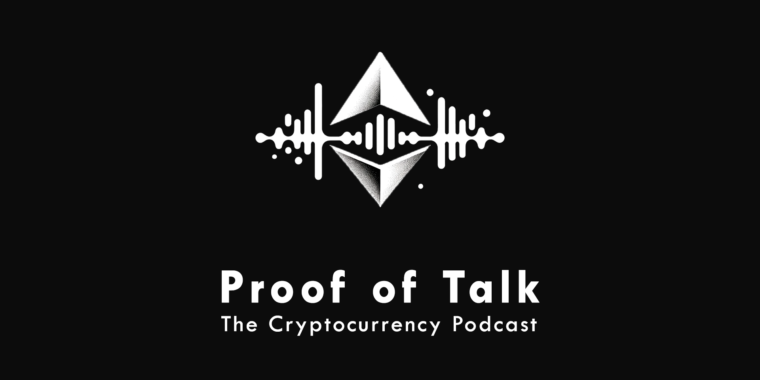
I’ve been in the cryptocurrency space since early 2017 — but I’ve always had an interest in technology and finance so it was an incredible discovery for me when I first stumbled on this space.
I’ve seen the world become increasingly more monopolised with a handful of organisations controlling most of the media, computing, and electronics, while the rest of us are distracted by politics that are meant to divide us.
I’ve seen the Internet transform from a free and open space to an advert-ridden mess of censored echochambers where the Terms of Service dictate ideological narratives.
So naturally, the promise of Web3 and decentralisation resonated deeply with me. I know that outside of crypto the term web3 doesn’t mean much. Simply put, Web3 promises to bring the decentralisation, openness, and freedom back to the Internet.
It promises an Internet that cannot be owned, controlled, or censored, and this is an absolute necessity if the truth is of any value to you.
I’ve been in the cryptocurrency space since early 2017 and my main focus has been around markets and trading. Since then, I’ve co-founded algorithmic cryptocurrency trading platform Aesir. However, working in one part of the industry, left me a bit disconnected from the other exciting areas and the general direction that crypto is headed.
That’s why I started Proof of Talk: The Cryptocurrency Podcast. I wanted to understand what other crypto founders are building, how they’re building it, and how they into crypto in the first place.
I wanted to understand their stories, their thinking, and through those, the direction of this industry. It’s been an incredible space for me to connect with amazing individuals and hear about pioneering new products that I had no idea about!
I’ve done 16 Episodes so far and the amount of information I’ve learned from some of the most talented people in the industry is unparalleled.
The Silent Progress of the Web3 Gaming Industry
Gaming is one of my main forms of entertainment. I particularly enjoy rich RPG experiences like Baldur’s Gate 3 and challenging games like Soulslikes. The sweet masochistic pleasure of soulslikes is just undeniable and whenever a new one drops, I’m drawn to it like a moth to a bonfire.
On my podcast, I’ve had a couple of conversations around web3 gaming with Shawn Naderi from the LTO Network, Chronic from Paintswap, and Michael from Horizon.io.
The team at the LTO Network is building a hybrid blockchain solution that has both a public and a private layer. It’s meant to be used by institutions and individuals to build public solutions that require some degree of privacy. They’ve also been doing some amazing things with NFTs — which they call Ownables. Unlike traditional NFTs, Ownables on the LTO Network give you more control over where and how you store the data, allowing for some pretty interesting use cases in web3 gaming.
For instance, with ownables, unique NFTs (like your character) can own semi-fungible NFTs, such as the items in your inventory. Shawn and the team have also been discussing a potential standard for in-game items to allow players to import them in basically any other game they want, potentially leading to massive interconnected game universes, with on-chain data.
Working with the Fantom foundation, Chronic and the team over at Paintswap have actually built an idle play on-chain game on Fantom called Estfor Kingdom. The cool thing about web3 games is that game economies extend beyond the game itself. Because in-game tokens are actual ERC-20s and because inventories are an actual wallet with the items as NFTs, all of these become directly trade-able on real DeFi markets.
Building a Web3 game is no easy task. On top of the already long and difficult process of developing traditional games, developers have to also deal with the complexities of operating on the blockchain. That’s why Michael and the team at Horizon have Sequence — an all in one set of tools design to simplify the process of building web3 games so that developers can focus on crafing the amazing experiences that players have come to enjoy, without the adding complexity of the blockchain.
Sequence takes care of node gateway redundancy, querying and indexing the chain and even provides a Unity and Unreal engine SDK so game devs and use this directly with the tools they love.
Horizon managed to secure investments from Rockstar Games’ parent company Take Two Interactive as well as Ubisoft — so there’s definitely significant interest big game developers to explore in this direction.
The mission to Abstract away from Complexity
For simplicity, when I say web3, what I actually mean is the collection of notable blockchains and protocols that innovate in the cryptocurrency space.
If you’re new in this space, you’d be forgiven for feeling lost and confused. There are so many things going on at any given moment, that even seasoned players in the space often feel a sense of disconnect whenever a new community pops off that they had no idea about.
There’s also a fair amount of complexity for users to onboard, and the sheer amount of choices is stupid. Do you just get a Metamask wallet and stick with Ethereum and EVM? Or should you explore the Solana ecosystem? Or maybe Tezos? How about Cosmos or Polkadot?
Maria and Susannah from the Interchain Foundation who are responsible for the development of Cosmos believe that the future of Web3 is interconnected. Along with the rest of the team at Interchain they’ve been building a series of tools that allow blockchains to natively communicate with each other.
This goes well beyond Bridges, which can often be unsecure. The Inter-Blockchain Connectivity protocol actually creates a “light” version of one blockchain on the other chain, so that both chains are always aware of each other’s state at any given moment. This protocol allows for seamless transfer of data with none of the drawbacks of bridges.
Jason Lau, the Chief Innovation Officer at OXK has also been stressing on the imporance of interconnectivity and abstracting away from this complexity. The episode with Jason is not released yet, but make sure to give the Podcast a Follow on Spotify or Apple Music so you don’t miss it when it drops.
The team at OKX have build a multichain wallet that allows users to connect to over 85 separate chains and ecosystems from one singular interface.
It looks like the future of blockchain is one massive, interconnected network, with a gateway that connects you to the entirety of this network — much like the Internet itself.
The Incorporation of AI
One of the most Interesting projects had the pleasure of exploring on the cryptocurrency podcast is Satori — developed by Jordan.
Satori is a decentalised network of AIs tasked with predicting the future. Each node is tasked with predicting a single metric. For instance — your node might predict the price of Gold, another node would predict the weather in Canada, another node would predict the price of Bitcoin. Any instant data that can be streamed into a node, can be used by the machine learning algorithms to try and predict the next value.
The genius idea behind Satori is that individually, nodes can only predict one thing, but together, the network itself may be able to make more general or high level predictions about the future using the millions of granular predictions that the nodes feed it. The project is in Beta but it’s incredibly fascinating.
With each episode I will continue to learn new things, and hopefully provide some value for someone else out there too. If you’d like to learn more about the cryptocurrency industry, go to https://proofoftalk.show/.
There are links to each episode on there and every episode has its own page. Or just go directly on Spotify and start with the latest episode.
Finally, if you’re into Algorithmic trading — check out algorithmic cryptocurrency trading platform Aesir! Aesir is a state-of-the-art trading platform that allows you to build complex crypto trading bots and maximise your gains.
Thank you for reading!
Enjoyed this article?
Sign up to the newsletter
You’ll receive more guides, articles and tools via e-mail. All free of course. But if you value this blog and its educational resources, you can subscribe to become a paid member for only $3 a month. This will keep the website open and free.
